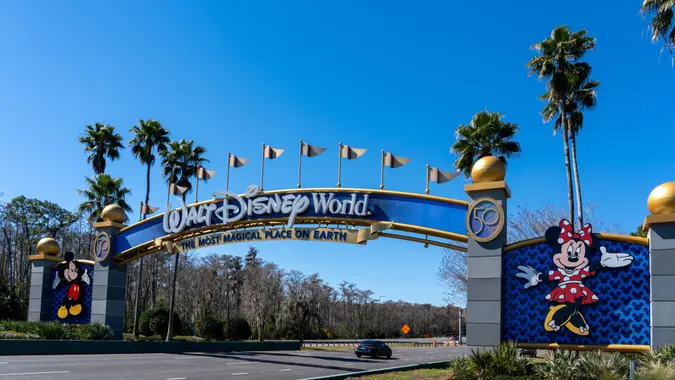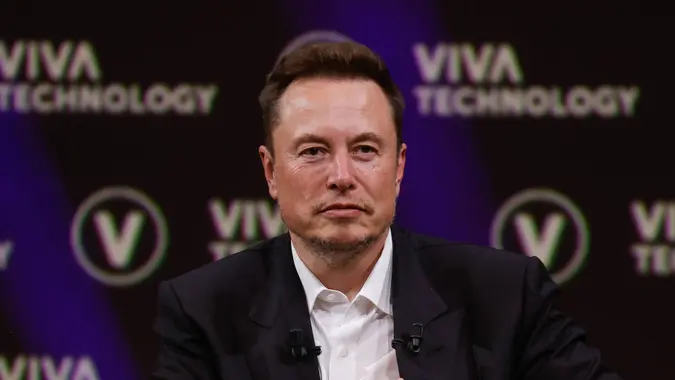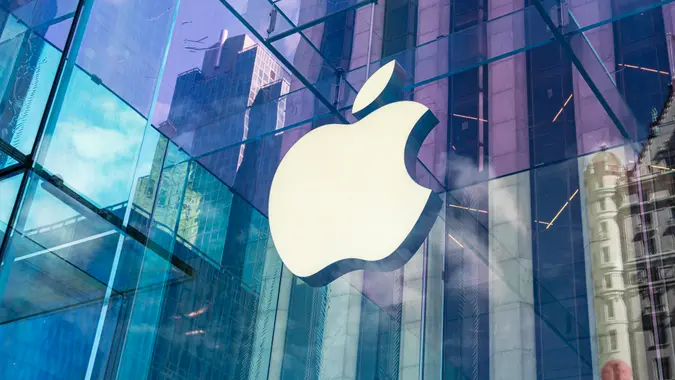5 Auto Stocks That Could Benefit If Trump Ends the EV Tax Credit

Commitment to Our Readers
GOBankingRates' editorial team is committed to bringing you unbiased reviews and information. We use data-driven methodologies to evaluate financial products and services - our reviews and ratings are not influenced by advertisers. You can read more about our editorial guidelines and our products and services review methodology.

20 Years
Helping You Live Richer

Reviewed
by Experts

Trusted by
Millions of Readers
President Donald Trump has thrown the auto industry into uncertainty over the end potential of the $7,500 federal electric vehicle (EV) tax credit. However, the possibility also offers fresh investment opportunities.
Many automakers are worried about losing subsidies, while some could even profit by using their advantages in hybrid vehicles, conventional engines or luxury markets.
Investors should pay attention to companies positioned to thrive without EV incentives in an environment of policy changes. If the auto EV tax credit ends, five auto stocks could reap maximum benefits based on their strategic flexibility, market strength and financial stability.
Tesla (TSLA)
Tesla’s profitability and vertical integration are insulation from subsidy cuts. According to CNN News, Tesla reported its first annual sales decline in 2024, which was 1.8 million units, down 1% year-over-year (YoY). Despite that, the U.S. automaker is the only one that makes consistent money from EVs. CEO Elon Musk has expressed his support for the eradication of credit in a post on X and accused it of harming only Tesla.
The company’s vertical integration cuts down production costs by reducing reliance on external suppliers. Such investor confidence in Tesla’s resilience led the company’s stock to soar 35% following the election, according to BBC reports. Tesla remains insulated from the volatile world of subsidy-driven investments, with a valuation of $1 trillion and autonomous vehicle investments.
Toyota (TM)
Toyota’s hybrid-first approach comes as slowing adoption trends for EVs are followed by strong hybrid sales. Operating profit for Toyota’s third quarter of 2024 declined by 28%, but its record fiscal year profit was a result of “hybrid demand,” Argus Media reported. In another context, Toyota sold 3.6 million hybrids globally, up 32.1% from the previous year.
Toyota Global Newsroom said the company continues to invest in hydrogen technology, including a new fuel cell system for commercial use. For the year ending March 2025, Toyota raised its full-year operating profit forecast by 9% to 4.7 trillion yen ($30.7 billion).
It is a sign of confidence in its prowess to weather the challenges in the market. Robust hybrid sales, along with strategic measures to increase competitiveness, support the optimism.
Honda (HCM)
Honda’s balance of ICE, hybrid, and EV investment benefits from market risks. Honda sold 19.6 million motorcycles in 2024 globally, shipping it to a new record, as reported by MotorcyclesData. On a global scale, the company aims to gain a 50% share in the motorcycle business and acted as a strong contributor to the company’s overall financial stability.
According to Honda News, Honda will invest $15 billion in Ontario to build a comprehensive EV supply chain, with production expected to start in 2028 and 240,000 vehicles per year. Honda also launched a solid-state battery demonstration line in January 2025, with planned mass production in the middle of the 2020s. According to PR Newswire, Honda’s nine months ended December 2024, and its financial results showed an operating profit of 1,139.9 billion yen (over $7.68 billion USD).
PACCAR (PCAR)
PACCAR’s dominant place in the conventional freight vehicle segment means that delayed electrification of logistics could potentially be beneficial for the company.
According to StockTitan, in 2024, Kenworth and Peterbilt received 30.7% of U.S. and Canadian Class 8 retail sales. Sales of $6.67 billion at PACCAR Parts in 2024 helped the company remain financially strong. In 2024, the company’s revenue was $33.66 billion, net income was $4.16 billion, and it is the 86th year the company has been profitable.
Furthermore, PACCAR 2024 Investor Presentation shows the company realized a 30.9% gross margin for its strong parts business, indicating its ability to withstand EV market fluctuations.
Harley-Davidson (HOG)
Gasoline-powered Harley-Davidson motorcycles are largely insulated from the risks of EV subsidy, with LiveWire EVs generating little revenue.
In Q4 2024, LiveWire collected $10.8 million in revenue, which was 29% down from the year prior. According to Harley-Davidson Media Kit the company has a “More Roads to Harley” strategy, which is aimed at customizing Harley and adding more products, moving the target groups.
In 2024, the company brought in $1.1 billion in cash from operating activities and bought back $450 million worth of shares, PR Newswire noted as money coming back into the company. The company’s brand loyalty and customization make it better positioned in the competitive motorcycle market.
More From GOBankingRates
 Written by
Written by  Edited by
Edited by 
























